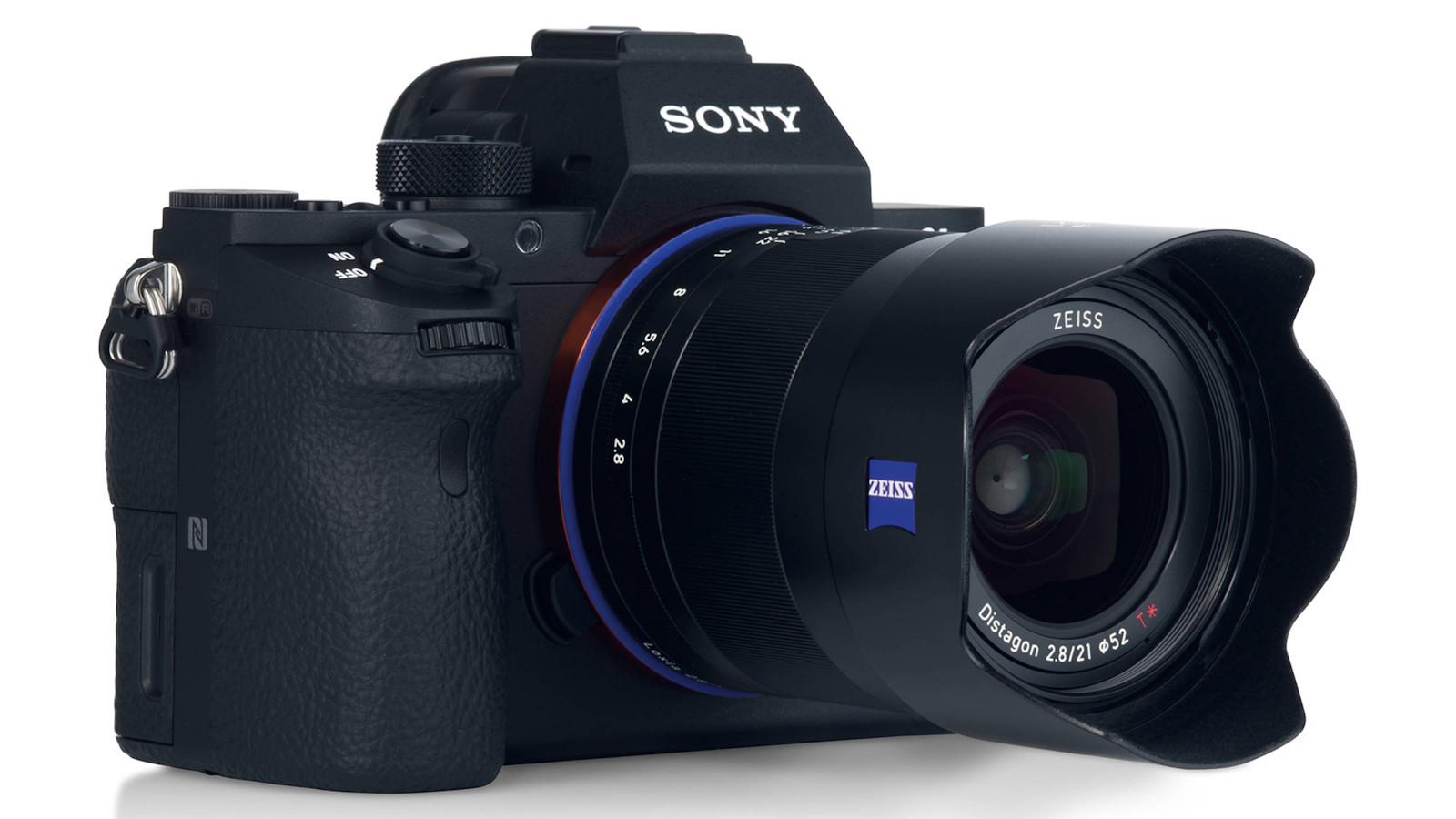
The Zeiss Loxia 21mm F2.8 is the most wide-angle lens in the Zeiss collection of Loxia lenses. They take their name from a classification of bird, which I’ve grown used to seeing in Zeiss lenses, this time of a ‘chunky finch’. There’s nothing chunky about the lens, however, as it’s refreshingly compact and lightweight for such an ultra-wide-angle prime. Like the longer 25mm F2.4, 35mm F2, 50mm F2 and 85mm F2.4 lenses in the Loxia family, this one has a 52mm filter thread which makes it easy to mix and match filters across the board.
Specifications
Key features
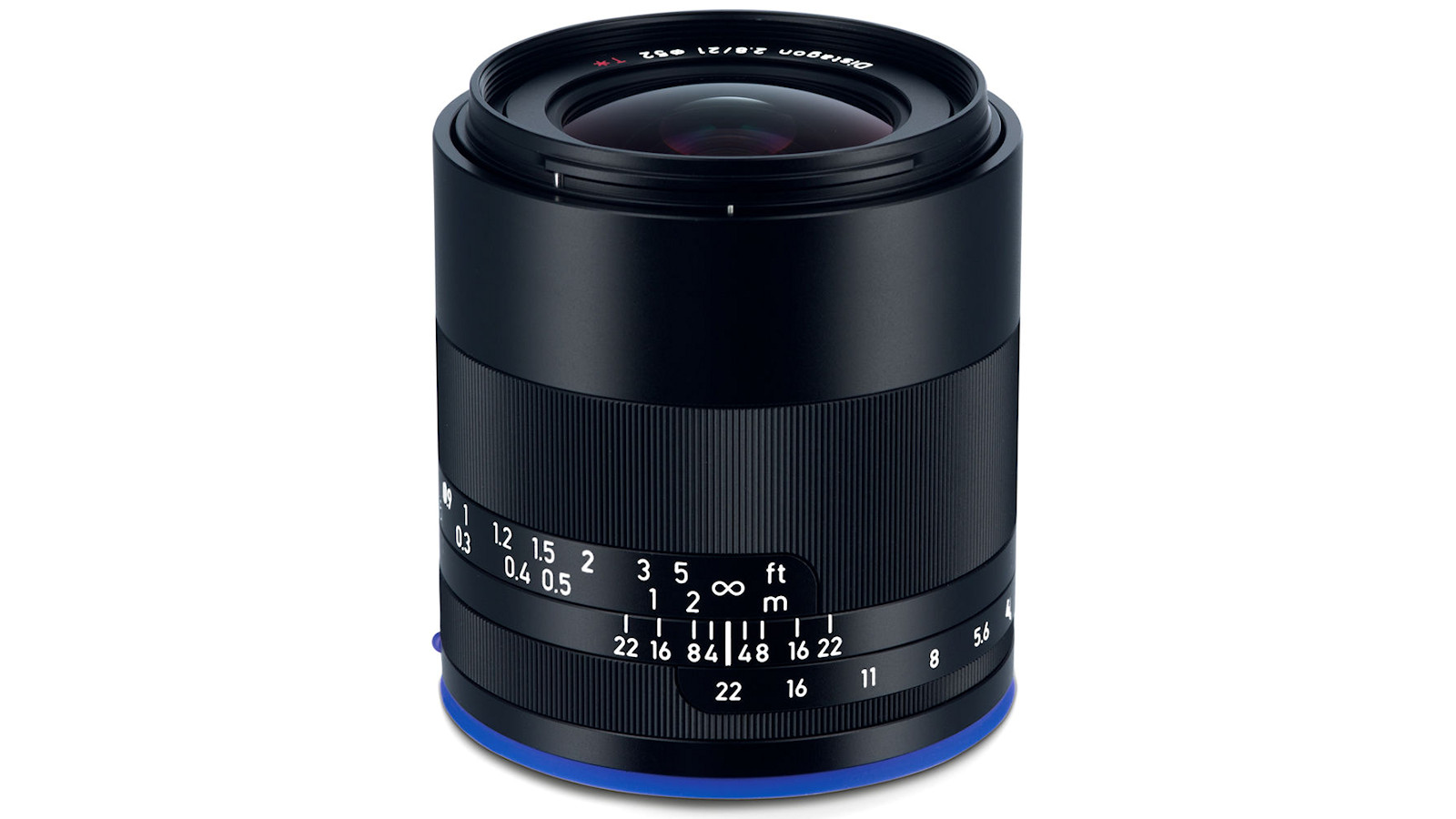
In these days of high-tech digital photography, one glaring omission is the lack of autofocus. You might argue that without the split screens and microprisms of 35mm film SLRs, manual focusing is a tricky and fiddly business. However, the Sony full-frame cameras for which this lens is designed feature focusing aids like magnified preview and focus peaking, so I don’t feel it’s much of a problem. Better still, as a manual-focus lens, the rubberized focus ring has a lengthy 90-degree throw and enables silky-smooth and ultra-precise adjustments. A focus distance scale is also present and correct on the lens, complete with depth of field markers for apertures of f/8 and f/22. The combination of a 21mm focal length and f/2.8 aperture also make the lens a prime candidate for astrophotography, where manual focusing rather than autofocus is the order of the day (or night) anyway.
I like that the lens features an aperture control ring, situated at the rear. Although it’s now quite commonplace, Loxia lenses were the first to include an aperture ring click/de-click mechanism, making them equally adept at stills and video capture. Switching between the two involves using a supplied key, the only downside being that you have to remove the lens from the camera to make the change.
Build quality feels rock solid. The weather-sealed lens features a metal casing as well as a metal mounting plate, and is impeccably turned out. Unlike some ultra-wide-angle lenses, the petal-shaped hood is removable, enabling the easy attachment of filters, and has the usual bayonet-mount fitting.
Performance
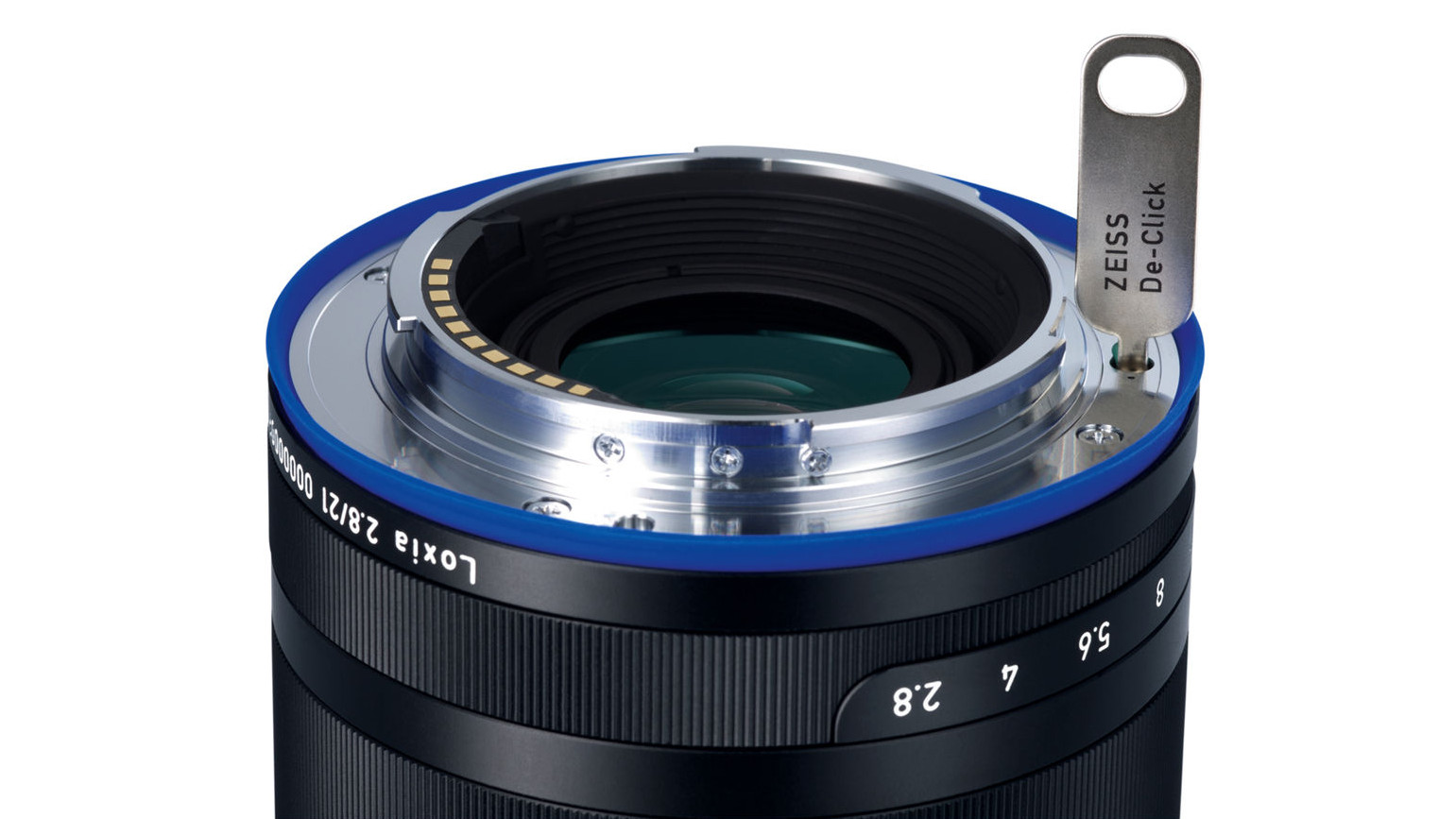
For applications like landscape photography, cityscapes, architecture and astrophotography, edge-to-edge sharpness is often a bonus. The lens does well in this respect, especially in the f/5.6 to f/11 sector of the aperture range. Wide-open edge-sharpness at f/2.8 isn’t so impressive but still up to the task of astrophotography.
Along with strong sharpness performance, the lens exhibits negligible color fringing and practically no distortion whatsoever, That’s a massive difference to many wide-angle lenses designed for mirrorless cameras that rely entirely on automatic in-camera correction. Image quality is further boosted by the use of an aspherical element and four anomalous partial dispersion elements. The famous Zeiss T* anti-reflective coating is applied to every surface of all elements, to boost contrast and color fidelity while minimizing ghosting and flare.
Lab results
We run a range of lab tests under controlled conditions, using the Imatest Master testing suite. Photos of test charts are taken across the range of apertures and zooms (where available), then analyzed for sharpness, distortion and chromatic aberrations.
We use Imatest SFR (spatial frequency response) charts and analysis software to plot lens resolution at the center of the image frame, corners and mid-point distances, across the range of aperture settings and, with zoom lenses, at four different focal lengths. The tests also measure distortion and color fringing (chromatic aberration).
Sharpness:
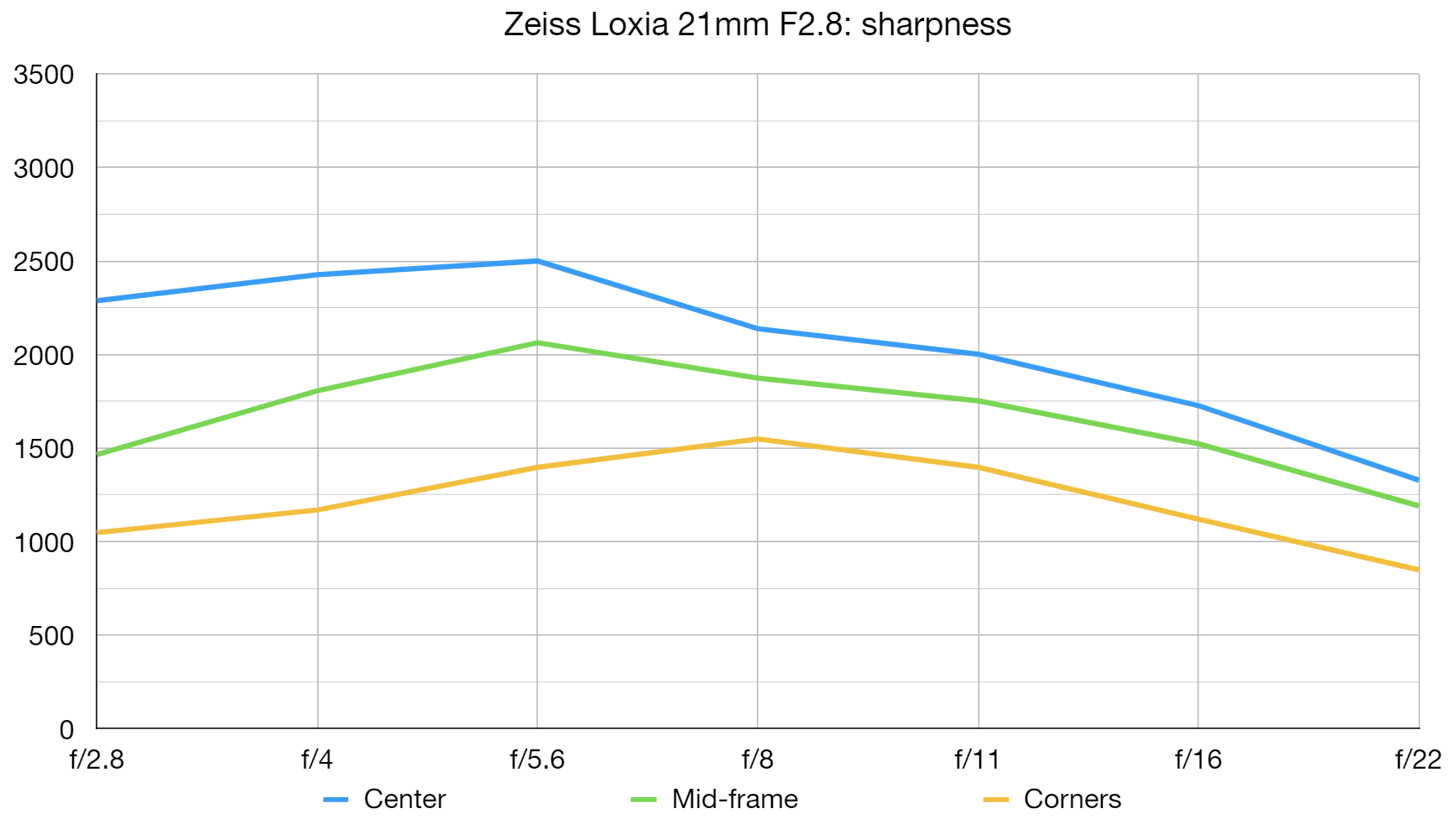
Sharpness in the central region of the frame is excellent, even when shooting wide-open at f/2.8. Edges and corners come on strong at f/5.6, only really dropping off at the narrowest aperture of f/22, due to the usual phenomenon of diffraction.
Fringing:
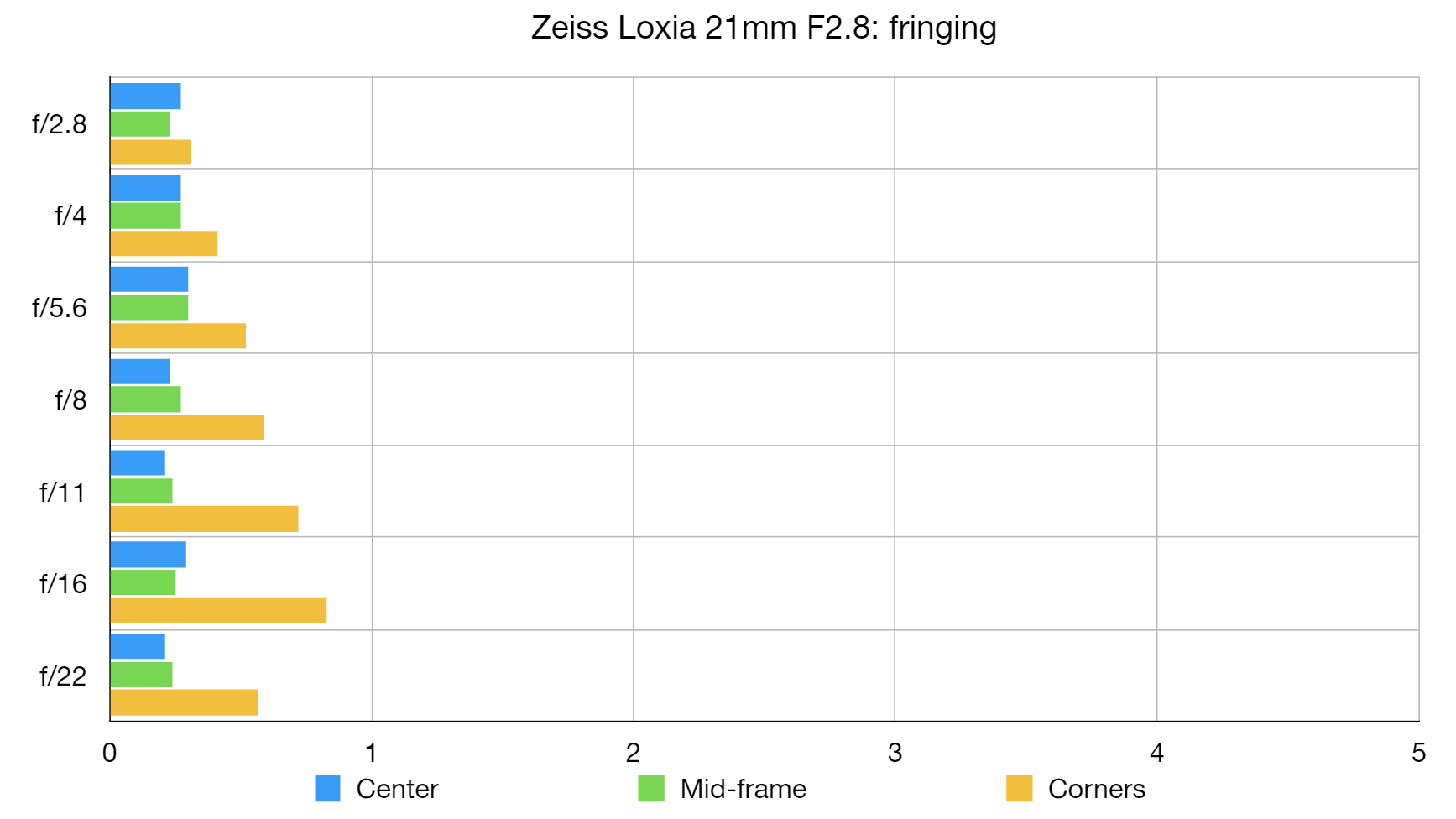
There’s virtually no color fringing to be seen, even out at the extreme edges and corners of the frame, and that’s without using automatic in-camera correction.
Distortion: 0.07
It’s refreshing to see a wide-angle lens for mirrorless cameras that’s designed to give virtually zero distortion, without the need to correct for distortion in-camera.
Verdict

I love the retro look and feel of the Zeiss Loxia 21mm F2.8 manual-focus lens. Unlike ‘dumb’ lenses, however, it boasts a full complement of built-in electronics for communication with the host camera body. Build quality and handling are sublime and optical performance is top-drawer. It’s pretty compact and lightweight as well, making it a highly desirable prime if you can give up your autofocus habit.







